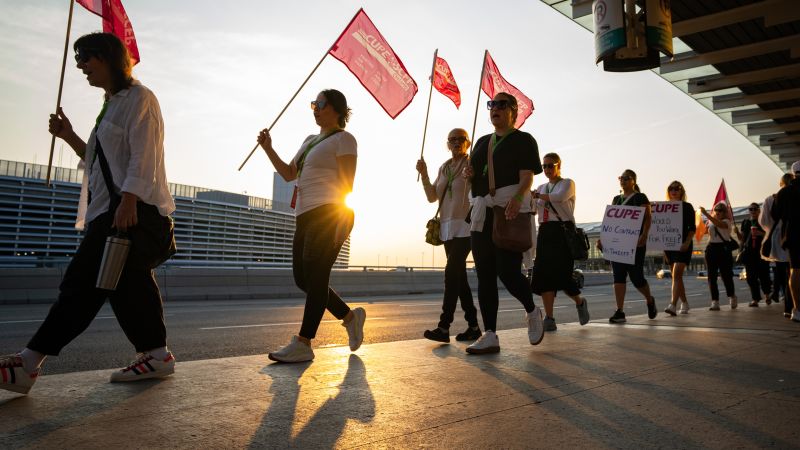On the early morning of Saturday, more than 10,000 flight attendants from Air Canada initiated a strike, effectively halting operations at the nation’s largest airline. This sudden work stoppage prompted immediate governmental intervention, with Canadian Jobs Minister Patty Hajdu announcing that the Canada Industrial Relations Board (CIRB) would order the aircrew to return to work to restore normal operations. The government recognized the strike’s detrimental impact on the Canadian economy, prompting Hajdu’s decision to act swiftly.
In an official conference held in Ottawa, Minister Hajdu articulated the government’s rationale for intervention, emphasizing the need to secure “industrial peace” to protect the interests of the nation and its citizens. This move was facilitated through Section 107 of the Canada Labor Code, which empowers the government to compel arbitration in labor disputes. Air Canada had requested this intervention just days prior, underscoring the escalating tensions between the airline and its flight attendants represented by the Canadian Union of Public Employees (CUPE).
The CIRB’s involvement not only aims to restore operations but also to mediate an agreement between Air Canada and its employees. Minister Hajdu stated that the Board would oversee any necessary settlements and extend the terms of the existing collective agreement to ensure employee rights and airline stability. Just before the commencement of the strike, Air Canada’s flight attendants overwhelmingly voted in favor of the stoppage, with an impressive 99.7% supporting the initiative. Their demands include increased wages and compensation for time spent not in the air.
Wesley Lesosky, president of the Air Canada component of CUPE, voiced his frustrations about the situation. He expressed concerns that the government’s intervention is undermining workers’ rights to take job action, particularly when faced with an employer he described as “obstinate.” Lesosky highlighted the disparity between the airline’s substantial profits and the relatively low pay for the flight attendants who contribute significantly to its operations.
In defense of the government’s actions, Hajdu has denied any anti-union sentiments, explaining that the government intervened as both parties appeared to have reached a stalemate. She suggested that both Air Canada and the union needed external assistance to finalize negotiations effectively. Air Canada has asserted that they had put forth a competitive compensation package that includes a proposed total of 38% increase over four years, along with hourly raises ranging from 12% to 16% within the first year, claiming that these offers would elevate their flight attendants to being the highest-paid in the Canadian staffing landscape.
The logistical fallout from the strike has been significant. Just hours into the work stoppage, by 11:00 a.m. ET, over 662 of Air Canada’s flights were canceled, including 342 domestic and 320 international routes, as reported by aviation analytics firm Cirium. An additional report from FlightAware indicated that around 86% of Air Canada’s operations and 96% of its subsidiary Air Canada Rogue flights were also grounded.
In her comments regarding the situation, Minister Hajdu underscored the immediate pain inflicted on travelers and the broader implications for the Canadian economy. The cancellations have adversely affected essential deliveries, including pharmaceuticals, and have left thousands of Canadians without travel plans. When questioned on the timeline for returning to regular flight operations, Hajdu stated that the CIRB would review both positions before determining the next steps. She noted that the board might take 24 to 48 hours to complete its assessment, while Air Canada warned it could take up to 10 days to normalize services once the strike is effectively resolved.
Ultimately, this sequence of events has ignited substantial discussions on labor rights, the balance of power in labor negotiations, and the critical nature of public service employees within the economy. The intersection between workers’ rights and corporate responsibilities continues to evoke varied opinions from policymakers, labor organizations, and the public alike, making it a topic of significant relevance in contemporary Canadian discourse.












